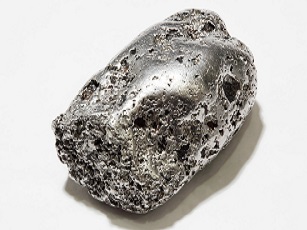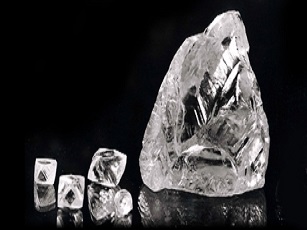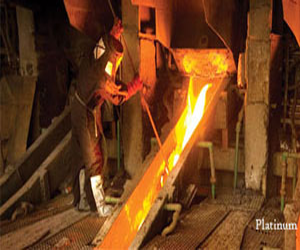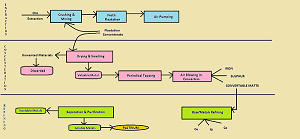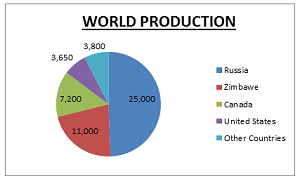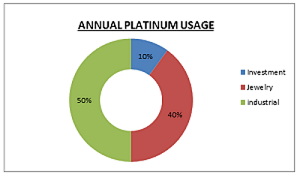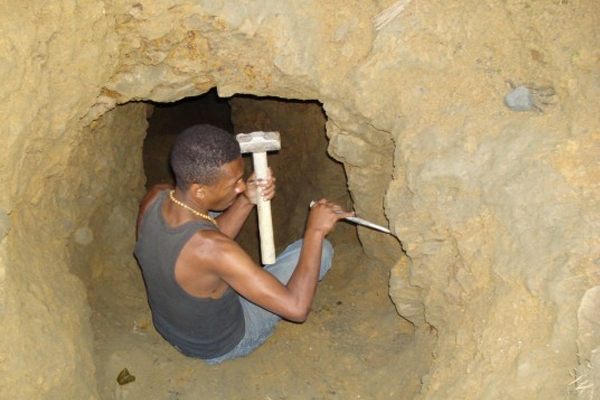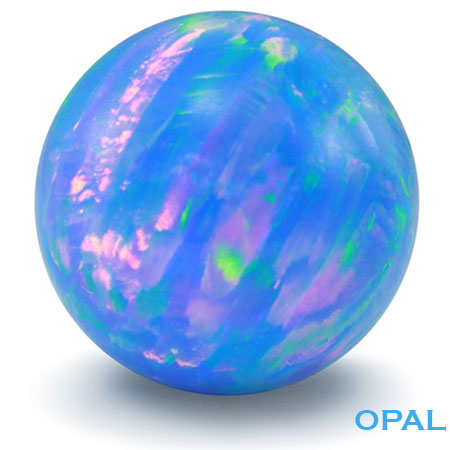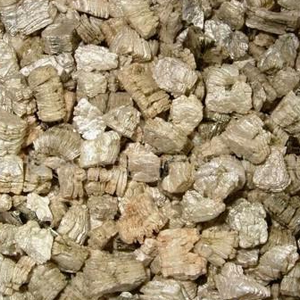PLATINUM MINING :
DESCRIPTION :
Platinum, is a heavy, malleable,ductile, highly inactive, silverish-white transition metal. Platinum is a member of group 10 elements of the periodic table.It is one among the scarce elements found in Earth's crust and has six naturally occurring isotopes. It is also achemical element.
* PLATINUM MINING AND EXTRACTION METHODS
* PLATINUM REFINING AND ISSUES
* INTERESTING FACTS ON PLATINUM
OCCURRENCE IN NATURE :
It occurs in some nickel and copper ores along with some natural deposits.It is highly valuable and a precious metal.Because of its scarcity in Earth's crust, only a few hundred tonnes are produced annually. Since, it is less reactive it has remarkable resistance to corrosion, even at high temperatures, and is therefore taken as a noble metal. Consequently, platinum is often found chemically in pure state. Though it occurs naturally in the alluvial sands of various rivers, it was first used by pre-Columbian South American citizens. Later it was referenced in European writings in the early 16th century. Credit for the modern rediscovery of platinum is given to Antonio de Ulloa.
HISTORY :
Platinum wasn't observed by western scientists until 1735. Platinum, in the form of the mineral sperrylite (PtAs2), is obtained as a by-product of the nickel mining operation. Spanish people were the first Europeans to encounter the metal, although they found it a nuisance because of its similar appearance as silver. They referred to the metal as Platina, the Spanish word for silver. Although studied by a number of chemists in the mid-18th century, Francois Chabaneau was the first to produce a pure sample of platinum metal in 1783. In 1801, an English scientist William Wollaston invented a method for adequately extracting the metal from ore. Growing demand of the metal led to the discovery of large deposits in the Ural Mountains in 1824 and Canada in 1888. This ultimately led to geologist Hans Merensky's to discover the largest platinum deposit on earth.
USES OF PLATINUM :
1. Industrial Use: Platinum is used in several industrial applications, including catalytic converters in vehicles, electrical contacts, thermocouples, and dentistry equipment.
2. Jewelry Use: Platinum is a popular metal for jewelry because of its durability and beautiful luster. It is often used to craft engagement rings and other fine pieces of jewelry.
3. Investment: Platinum is often used as an investment in the form of bars, coins, and ETFs.
4. Medical Use: Platinum is used in medicine for chemotherapy drugs, pacemakers, and cancer treatments.
5. Automotive Use: Platinum is used in a variety of automotive applications, such as spark plugs, fuel cells, catalytic converters, and exhaust gas recirculation systems.
PLATINUM MINING AND EXTRACTION METHODS :
The mining of platinum ores is alike gold mining. The platinum orebody is a thin, tabular reef covering a vast area. This enables a progressive method of mining which includes the drilling of the reef and blasting it to advance the face. It combines the increased use of industralization and trackless-mining methods in steps. Platinum mining, however, differs from gold mining in different ways. Platinum reefs are igneous rocks. They were invaded into the upheld area as molten volcanic magma rising from below the earth's crust, later cooling and solidifying. This phenomenon created a layer control environment differing from that of gold mines.
PLATINUM REFINING AND ISSUES :
Precious metals refining processes have developed considerably in recent years. The older or classical process involved first roasting the Platinum Group Metal(PGM) concentrate. This made the rhodium, iridium and ruthenium. The platinum, palladium and gold were then dissolved and separated by a series of subsequent precipitations. The remaining residue was then upgraded by pyro-metallurgical and leaching processes before being separated into individual metals. Final purification of all metals was carried out by repeated dissolution and precipitation. Platinum however have many downfalls to mining it, for example, opening pit mining is very disturbing to the land on which it is happening. Platinum is also very costly and with the economy how it is many people might not be able to afford platinum.
PLATINUM PRODUCTION IN THE WORLD :
In 2020, the world's total mined platinum production was estimated to be 8.1 million ounces, down from 8.5 million ounces in 2019. The top five platinum-producing countries in the world are South Africa, Russia, Canada, Zimbabwe, and the United States. South Africa alone accounts for roughly 70% of the world's total platinum production.
STEPS INVOLVED :
The first step in the production process is to break platinum containing ore and immerse it in indicator containing water, a process known as 'froth flotation'. During flotation, air is pumped through the ore-water mix. Platinum particles rise to the surface in a froth that is skimmed off for further refining.Once dried, the concentrated mixture still contains less than 1% platinum. It is then heated to over 1500?C in electric furnaces and air is blown through again, removing iron and sulphur impurities.Aqua regia (a concoction of nitric acid and hydrochloric acid) is used to dissolve platinum metal from the mineral ore by creating chlorine that attaches to platinum to form chloroplatinic acid.In the final step, ammonium chloride is used to convert the chloroplatinic acid to ammonium hexachloroplatinate, which can be burned to form pure platinum metal. According to United States Geological Survey (USGS) statistics, about 30% of the 8.53 million pounds of platinum produced worldwide in 2012 came from recycled sources. South Africa at the Bushveldcomplex, is the largest producer of platinum, supplying over 75% of the world demand, while Russia (25 tonnes) and Zimbabwe (7.8 tonnes) are also large producers. Anglo Platinum, Norilsk Nickel and Impala Platinumare the largest individual producers of platinum metal. Platinum and palladium have the greatest economic importance and are found in the vast quantities. The other four PGM - rhodium, ruthenium, iridium and osmium - are produced as byproducts of platinum and palladium.
CHARACTERISTICS :
Platinum metal has many useful properties, which explains its application in a wide range of industries. It is one of the densest metal almost twice as dense as lead and is very stable, providing the metal finest corrosion resistant properties. It is also a good conductor of electricity and is considered a biologically compatible metal because it is non-toxic and stable, so it does not react, or individually affect body tissues. Recent research has also shown that platinum can be used to inhibit the growth of certain cancerous cells.
APPLICATIONS :
* Used to make high-temperature thermocouples with rhodium
* To make optically pure and flat glass for TVs, LCDs, and monitors
* To make threads of glass for fiber optics
* As a dummy for gold in electronic connections
* In coatings for ceramic capacitors in electronic devices
* In dental implantations
* To make high-quality flutes and to manufacture silicones
* In smoke and carbon monoxide detectors and coatings for razors.
* To make sealed electrodes in glass systems.
* Used as a catalyst to convert methyl alcohol vapors (CH4O) into formaldehyde (CH2O) on contact and in the production of sulfuric acid (H2SO4) and in the cracking of petroleum products.
ANNUAL PLATINUM USAGE :
The Platinum Usage is an annual report that details the trends and usage of Platinum in many different industries. This report provides a comprehensive overview of the global Platinum market, including market size, pricing, supply, demand, and production. It also provides insight into the various end-use applications of Platinum and its regional demand. Additionally, the report tracks the latest developments in Platinum technology and highlights new industry opportunities. The Platinum Usage Elaborate report helps decision makers identify current and upcoming trends in the Platinum market, and provides them with the necessary information to make informed decisions.
TOP PLATINUM PRODUCING COUNTRIES :
The top platinum-producing countries in the world are South Africa, Russia, Canada, and the United States. These countries produce the majority of the world's platinum supply.
South Africa is the world's leading platinum producer, producing roughly 75% of the world's platinum supply. Its two biggest platinum producing regions are the Bushveld Complex and the Great Dyke. The Bushveld Complex is the largest known source of platinum-group elements in the world. It is located in the Limpopo province of South Africa and is estimated to contain around 80% of the world's known platinum reserves.
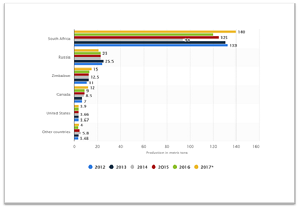
Russia is the second largest platinum producer in the world, producing approximately 16% of the world's platinum supply. The majority of Russia's platinum production comes from the Ural Mountains region. The Ural Mountains region is home to the world's second largest platinum deposit, the Norilsk-Talnakh deposit.
Canada is the third largest platinum producer in the world, producing approximately 4% of the world's platinum supply. The majority of Canada's platinum production comes from the Lac des Iles mine in Ontario. The mine is operated by North American Palladium and is estimated to contain around 6 million ounces of platinum reserves.
The United States is the fourth largest platinum producer in the world, producing approximately 3% of the world's platinum supply. The majority of the United States' platinum production comes from the Stillwater mine in Montana. The mine is operated by Sibanye-Stillwater and is estimated to contain around 2.3 million ounces of platinum reserves.
DATA ZONE :
INTERESTING FACTS ON PLATINUM :

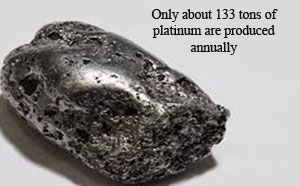
Related Mining

